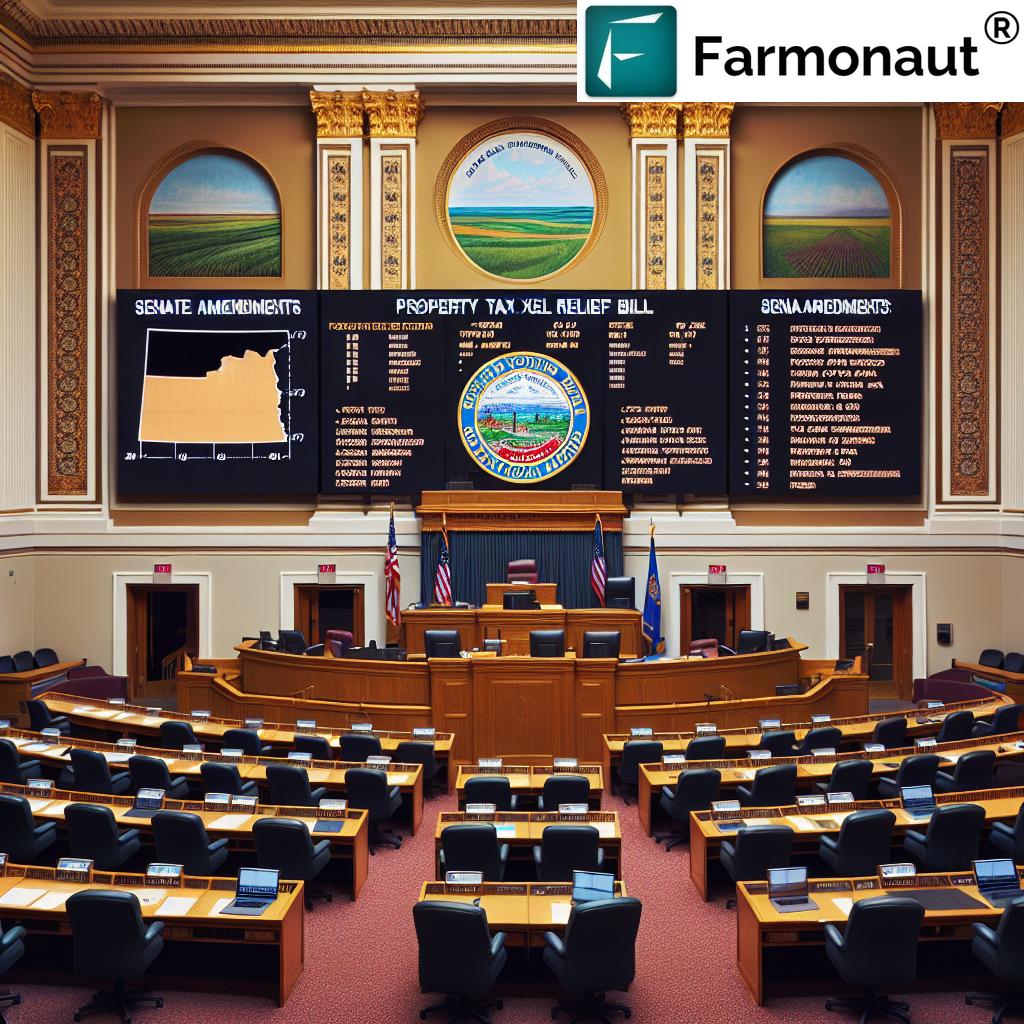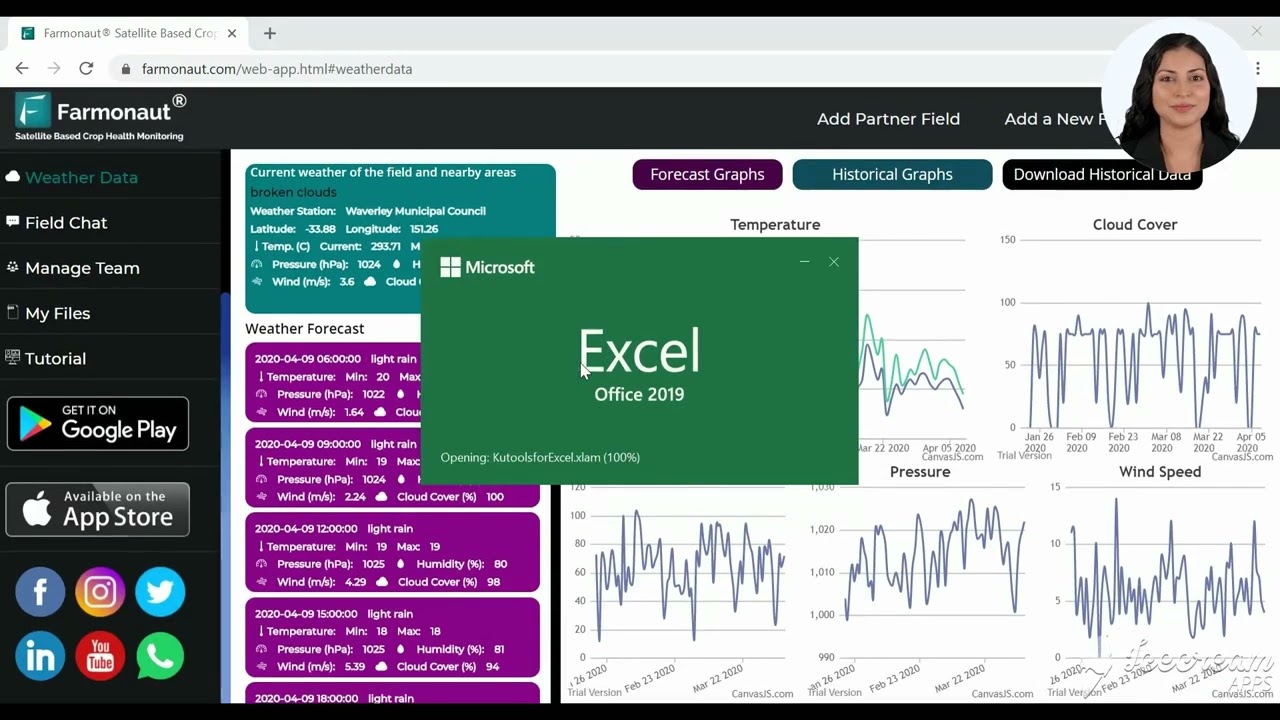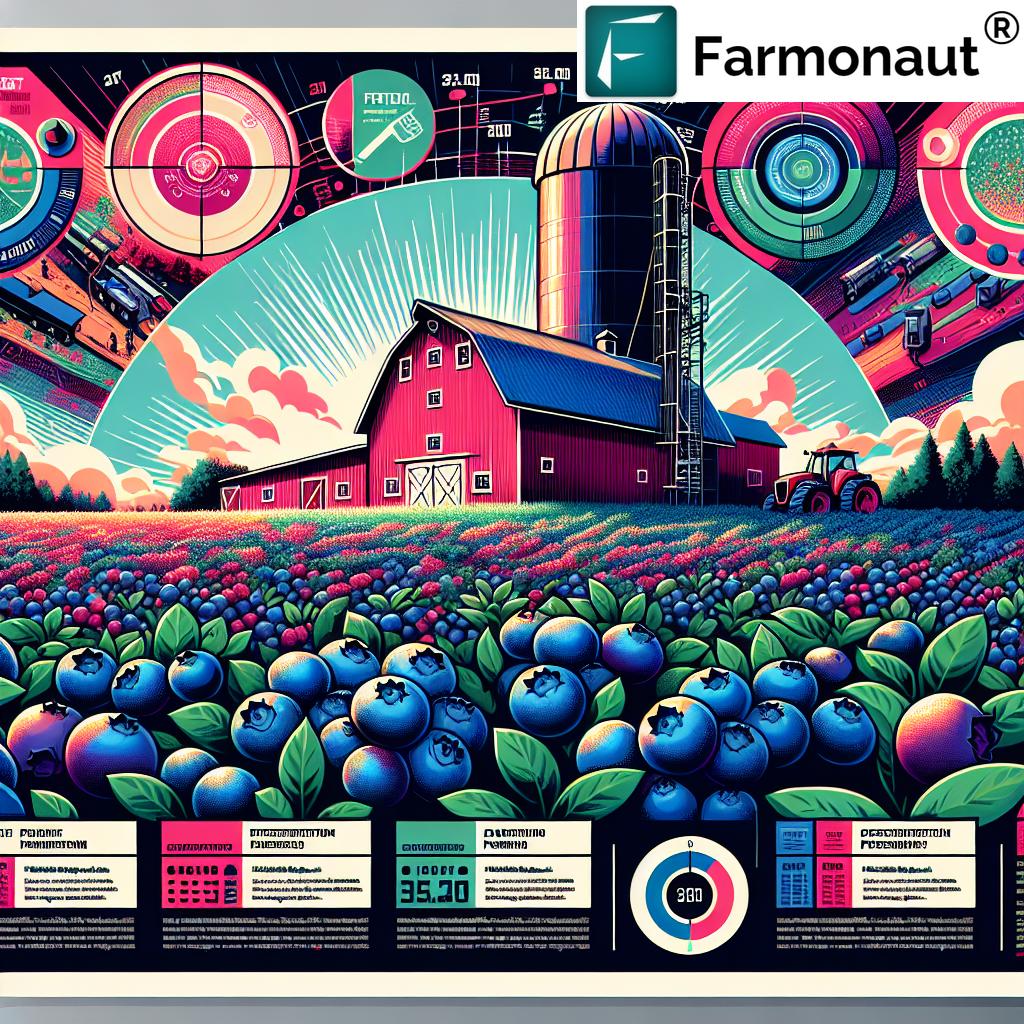North Dakota Senate Passes Amended Property Tax Relief Bill: Conference Committee Showdown Looms
“North Dakota Senate’s revised tax bill estimates $478 million in property tax relief for 2025-27.”
In a significant development for North Dakota’s property owners, the state Senate has unanimously passed a revised property tax relief bill, setting the stage for a potential showdown between the House and Senate. As we delve into the details of this crucial legislation, it’s important to understand the implications for homeowners, rural communities, and the broader landscape of property tax relief in the state.
The Senate’s Amendments: A Closer Look
On Thursday, the North Dakota Senate made substantial amendments to House Bill 1176, which could have far-reaching consequences for property tax relief in the state. Let’s break down the key changes:
- Reduced Maximum Credit: The Senate lowered the maximum primary residence credit from $1,450 (as approved by the House) to $1,250. This is a significant departure from Governor Kelly Armstrong’s original proposal of up to $1,550 for homeowners.
- “Skin-in-the-Game” Amendment: Senate Majority Leader David Hogue introduced what he calls a “skin-in-the-game” amendment. This provision limits the credit to 75% of the property owner’s total tax liability, ensuring that homeowners maintain some financial responsibility for their property taxes.
- Minimum Tax Credit: Despite the reductions, the bill maintains a minimum tax credit of $500 for homeowners, consistent with the level approved by lawmakers in 2023.
- Future Considerations: The amended bill includes language urging lawmakers in the 2027 session to consider reducing property taxes for other property types, such as agricultural and commercial properties.
These amendments reflect a nuanced approach to property tax relief, balancing the desire for substantial tax reductions with concerns about fiscal responsibility and the long-term sustainability of such measures.

The Impact on Agricultural and Rural Areas
One of the most contentious aspects of the amended bill is its focus on primary residences, potentially excluding agricultural properties from tax relief. This has raised concerns among lawmakers representing rural areas, who argue that the bill could disproportionately affect agricultural communities.
Senator Janne Myrdal, R-Edinburg, voiced her apprehension about excluding agricultural property from the tax credit. She highlighted that approximately 40% of the Legislature represents rural areas, and these regions often rely more heavily on property taxes than urban areas. The exclusion of agricultural land from the bill could potentially place a greater burden on rural taxpayers.
This debate underscores the complex interplay between urban and rural interests in North Dakota’s property tax landscape. As the state grapples with these issues, it’s worth noting that technology can play a role in supporting agricultural communities. For instance, Farmonaut’s crop loan and insurance solutions offer innovative ways for farmers to access financing and protect their investments, potentially easing some of the financial pressures faced by rural property owners.
The Road Ahead: Conference Committee and Potential Compromises
With the Senate’s amendments in place, the bill will now return to the House for approval. If the House does not concur with the Senate’s changes, which seems likely given the significant alterations, a conference committee will be appointed to reconcile the differences between the two chambers.
This conference committee, comprising three members from each chamber, will face the challenging task of finding common ground on several key issues:
- The maximum primary residence credit amount
- The “skin-in-the-game” provision limiting credits to 75% of tax liability
- The potential inclusion of other property types in the tax relief measures
- The overall fiscal impact of the bill on the state’s budget
Governor Kelly Armstrong has expressed his continued support for the House version of the bill but acknowledges that the focus will now shift to the conference committee proceedings. The governor remains optimistic, stating, “I think if the original version was on the floor of the Senate it would pass. I think there is plenty of room to get it back to where it was.”
Alternative Tax Relief Measures on the Horizon
While the fate of House Bill 1176 hangs in the balance, it’s important to note that alternative property tax relief measures are still under consideration. Senate Majority Leader David Hogue mentioned that the Senate Finance and Taxation Committee is reviewing two additional property tax bills: House Bill 1575 and House Bill 1168. These bills could potentially provide tax relief for property types not covered by the current legislation, such as agricultural and commercial properties.
This multi-pronged approach to property tax relief demonstrates the complexity of the issue and the Legislature’s commitment to finding comprehensive solutions. As lawmakers navigate these various proposals, they must balance the immediate desire for tax relief with long-term fiscal sustainability and fairness across different property types.
“The amended bill limits property tax credits to 75% of total tax liability, introducing a “skin-in-the-game” provision.”
The Debate Over Credit Amounts and Property Types
One of the central points of contention in the property tax relief debate is the amount of credit provided to homeowners. The progression from Governor Armstrong’s initial proposal of $1,550 to the House’s $1,450 and finally to the Senate’s $1,250 illustrates the ongoing negotiations and fiscal considerations at play.
Representative Mike Nathe, R-Bismarck, the primary sponsor of the bill, expressed disappointment with the Senate’s amendments, stating, “This is the No. 1 issue coming into this session and people have spoken loud and clear, and that’s what’s so disappointing about these amendments being kept on and reducing the benefits.”
The debate over credit amounts is closely tied to discussions about which property types should be eligible for relief. While the current bill focuses on primary residences, there’s growing pressure to expand relief to other property categories, particularly agricultural land. This issue is especially pertinent given North Dakota’s strong agricultural sector and the economic importance of farming communities.

The Role of Technology in Modern Agriculture
As North Dakota grapples with these property tax issues, it’s worth noting the role that technology can play in supporting the agricultural sector. Advanced farming technologies can help increase productivity and efficiency, potentially offsetting some of the financial pressures faced by farmers and rural communities.
For instance, Farmonaut’s large-scale farm management solutions offer cutting-edge tools for precision agriculture, helping farmers optimize their operations and potentially improve their bottom line. While these technologies don’t directly address property tax concerns, they can contribute to the overall financial health of agricultural businesses.
The Broader Context: Property Tax Relief Across the United States
North Dakota’s property tax debate is not occurring in isolation. Many states across the U.S. are grappling with similar issues, seeking to balance the need for tax relief with fiscal responsibility and equitable distribution of the tax burden. Some common themes in property tax relief efforts nationwide include:
- Homestead exemptions for primary residences
- Circuit breaker programs that provide relief based on income levels
- Tax deferral options for seniors and disabled individuals
- Caps on annual property tax increases
- Targeted relief for specific property types (e.g., agricultural, commercial)
As North Dakota lawmakers work to finalize their property tax relief package, they may draw inspiration from successful initiatives in other states while tailoring solutions to the unique needs of North Dakota’s residents and economy.
The Economic Impact of Property Tax Relief
As we consider the various proposals for property tax relief in North Dakota, it’s crucial to understand the potential economic impacts of these measures. Property tax reductions can have far-reaching effects on local economies, government services, and individual households.
Potential benefits of property tax relief include:
- Increased disposable income for homeowners, potentially stimulating local economies
- Improved housing affordability, particularly for first-time homebuyers
- Enhanced competitiveness for businesses, especially in border communities
- Potential increases in property values due to lower carrying costs
However, these benefits must be weighed against potential drawbacks:
- Reduced revenue for local governments, potentially impacting public services
- The need to find alternative funding sources to make up for lost property tax revenue
- Possible shifts in tax burden to other property types or revenue streams
As lawmakers debate the merits of various property tax relief proposals, they must carefully consider these economic implications to ensure that the final legislation provides meaningful benefits without unintended negative consequences.
The Role of Data and Technology in Property Tax Assessment
In the midst of this property tax debate, it’s worth noting the increasing role of data and technology in property assessment and tax administration. Advanced mapping and data analysis tools can help ensure more accurate and equitable property valuations, potentially addressing some of the concerns raised in the current legislative discussions.
For example, Farmonaut’s carbon footprinting solutions demonstrate how satellite technology and data analysis can be applied to agricultural properties. While primarily focused on environmental metrics, such technologies highlight the potential for data-driven approaches in property assessment and management.
As North Dakota and other states continue to refine their property tax systems, we may see increased adoption of these technologies to improve accuracy, transparency, and fairness in the assessment process.
Looking Ahead: The Conference Committee and Beyond
As we look towards the future of property tax relief in North Dakota, all eyes are on the upcoming conference committee. This group of legislators will face the challenging task of reconciling the differences between the House and Senate versions of the bill.
Key points of negotiation are likely to include:
- The maximum credit amount for primary residences
- The inclusion or exclusion of the “skin-in-the-game” provision
- Potential expansion of relief to other property types, particularly agricultural land
- The overall fiscal impact and funding mechanisms for the tax relief package
Senator Mark Weber, R-Casselton, chair of the Senate Finance and Taxation Committee, has indicated that the negotiation process could extend over multiple days. He also noted that the two additional property tax bills still under consideration in his committee could potentially be used to provide technical corrections to House Bill 1176, depending on the outcome of the conference committee deliberations.
This fluid situation underscores the complexity of enacting significant property tax changes and the importance of careful deliberation and compromise in the legislative process.
Comparative Analysis: Property Tax Relief Proposals
| Property Type | Current Tax Credit (estimated) | House Proposal Credit (estimated) | Senate Amended Bill Credit (estimated) | Percentage Change from Current |
|---|---|---|---|---|
| Primary Residence | $500 | Up to $1,450 | Up to $1,250 | +150% to +190% |
| Agricultural Land | N/A | Not included | Not included (consideration for 2027) | N/A |
| Commercial Property | N/A | Not included | Not included (consideration for 2027) | N/A |
| Total Estimated Tax Relief (2025-27) | N/A | Not specified | $478 million | N/A |
This table provides a clear comparison of the different proposals, highlighting the focus on primary residences and the potential for future consideration of other property types. The significant increase in tax credits for primary residences underscores the substantial nature of the proposed relief, while also illustrating the differences between the House and Senate versions of the bill.
The Broader Implications for North Dakota’s Economy
As we consider the various property tax relief proposals, it’s important to reflect on the broader implications for North Dakota’s economy. Property tax policy can have significant ripple effects across various sectors and communities:
- Housing Market: Reduced property taxes could stimulate the housing market by making homeownership more affordable and potentially increasing property values.
- Local Government Finances: While property tax relief is beneficial for homeowners, it could potentially strain local government budgets, necessitating careful fiscal planning and possibly alternative revenue sources.
- Business Competitiveness: For commercial properties, tax relief could enhance North Dakota’s attractiveness for businesses, particularly in border regions competing with neighboring states.
- Agricultural Sector: The current focus on primary residences has raised concerns about the impact on the agricultural sector. Future considerations for agricultural land could significantly affect rural economies and the state’s vital farming industry.
These wide-ranging effects underscore the importance of a balanced and well-considered approach to property tax relief. Lawmakers must navigate these complex issues to create a policy that provides meaningful benefits while maintaining fiscal responsibility and supporting the state’s diverse economic interests.
The Role of Technology in Modern Property Management
As North Dakota grapples with these property tax issues, it’s worth considering how technology can play a role in modernizing property management and potentially easing some of the administrative burdens associated with property taxes. Advanced software and data analytics tools can help both property owners and local governments streamline processes and make more informed decisions.
For instance, Farmonaut’s fleet management solutions demonstrate how technology can be applied to optimize resource management in agricultural settings. While not directly related to property taxes, such tools highlight the potential for technological innovation to improve efficiency and decision-making in property-related matters.
As the state continues to refine its approach to property taxation, embracing technological solutions could provide additional avenues for addressing the complex challenges at hand.
FAQs About North Dakota’s Property Tax Relief Bill
- Q: What is the main focus of the current property tax relief bill?
A: The bill primarily focuses on providing tax credits for primary residences in North Dakota. - Q: How much tax relief does the Senate’s amended bill propose?
A: The Senate’s version estimates $478 million in tax relief for citizens for the 2025-27 biennium. - Q: Are agricultural properties included in the current tax relief proposals?
A: Currently, agricultural properties are not included, but there is language urging consideration for their inclusion in future sessions. - Q: What is the “skin-in-the-game” amendment?
A: This amendment limits the tax credit to 75% of the property owner’s total tax liability, ensuring homeowners maintain some financial responsibility. - Q: How does the Senate’s proposal differ from the House version?
A: The Senate reduced the maximum primary residence credit from $1,450 (House version) to $1,250 and added the “skin-in-the-game” provision.
Conclusion: A Pivotal Moment for North Dakota’s Property Tax Policy
As North Dakota’s legislature navigates this complex property tax relief debate, we find ourselves at a pivotal moment in the state’s fiscal policy. The outcomes of these deliberations will have far-reaching consequences for homeowners, rural communities, local governments, and the broader economy of North Dakota.
The conference committee’s task of reconciling the House and Senate versions of the bill will be crucial in shaping the final form of this important legislation. As stakeholders from various sectors weigh in on the proposals, it’s clear that finding a balance between meaningful tax relief and fiscal responsibility will be key to crafting a successful policy.
While the focus remains on primary residences for now, the ongoing discussions about potentially expanding relief to other property types, particularly agricultural land, suggest that this debate is likely to evolve in the coming years. The language urging consideration of broader tax relief measures in the 2027 session indicates a recognition of the diverse property interests across the state.
As North Dakota moves forward with these property tax reforms, it will be essential to monitor their impacts closely. The effects on local government finances, housing markets, rural economies, and overall economic competitiveness will all need to be carefully evaluated to ensure that the chosen policies are achieving their intended goals without unintended negative consequences.
In this era of rapid technological advancement, there may also be opportunities to leverage innovative solutions in property assessment, tax administration, and resource management. While these technologies cannot solve all the challenges associated with property taxation, they may offer new tools to enhance efficiency, accuracy, and fairness in the system.
Ultimately, the path forward will require ongoing dialogue, careful analysis, and a willingness to adapt as circumstances evolve. The current legislative efforts represent an important step in addressing property tax concerns in North Dakota, but they are likely just the beginning of an ongoing process to refine and improve the state’s approach to this critical aspect of fiscal policy.
As citizens, policymakers, and stakeholders across North Dakota engage in this important debate, the goal remains clear: to create a property tax system that is fair, sustainable, and supportive of the state’s diverse economic interests. The coming weeks and months will be crucial in determining how North Dakota moves forward on this path, with implications that will be felt for years to come.
Earn With Farmonaut: Affiliate Program
Earn 20% recurring commission with Farmonaut’s affiliate program by sharing your promo code and helping farmers save 10%. Onboard 10 Elite farmers monthly to earn a minimum of $148,000 annually—start now and grow your income!




















